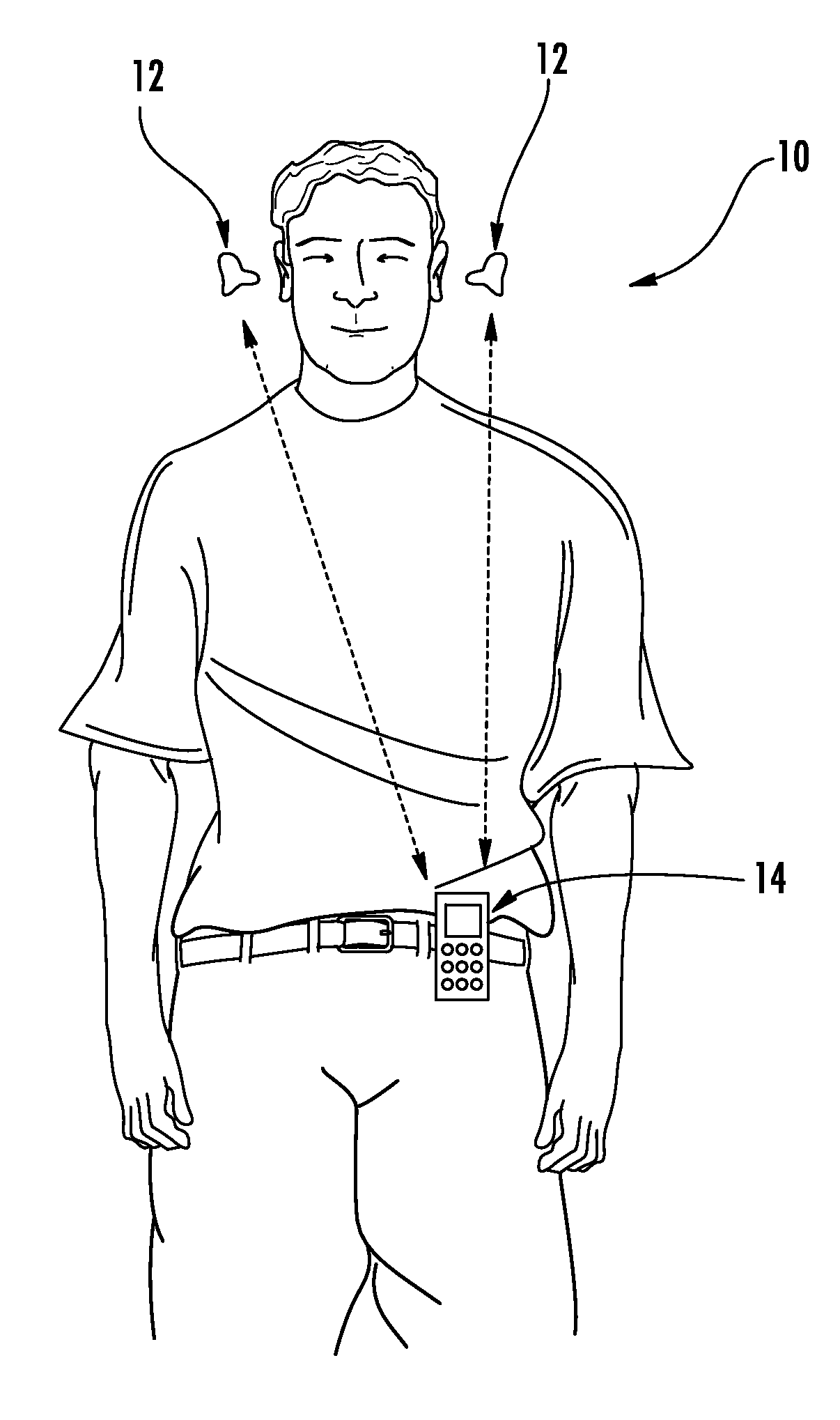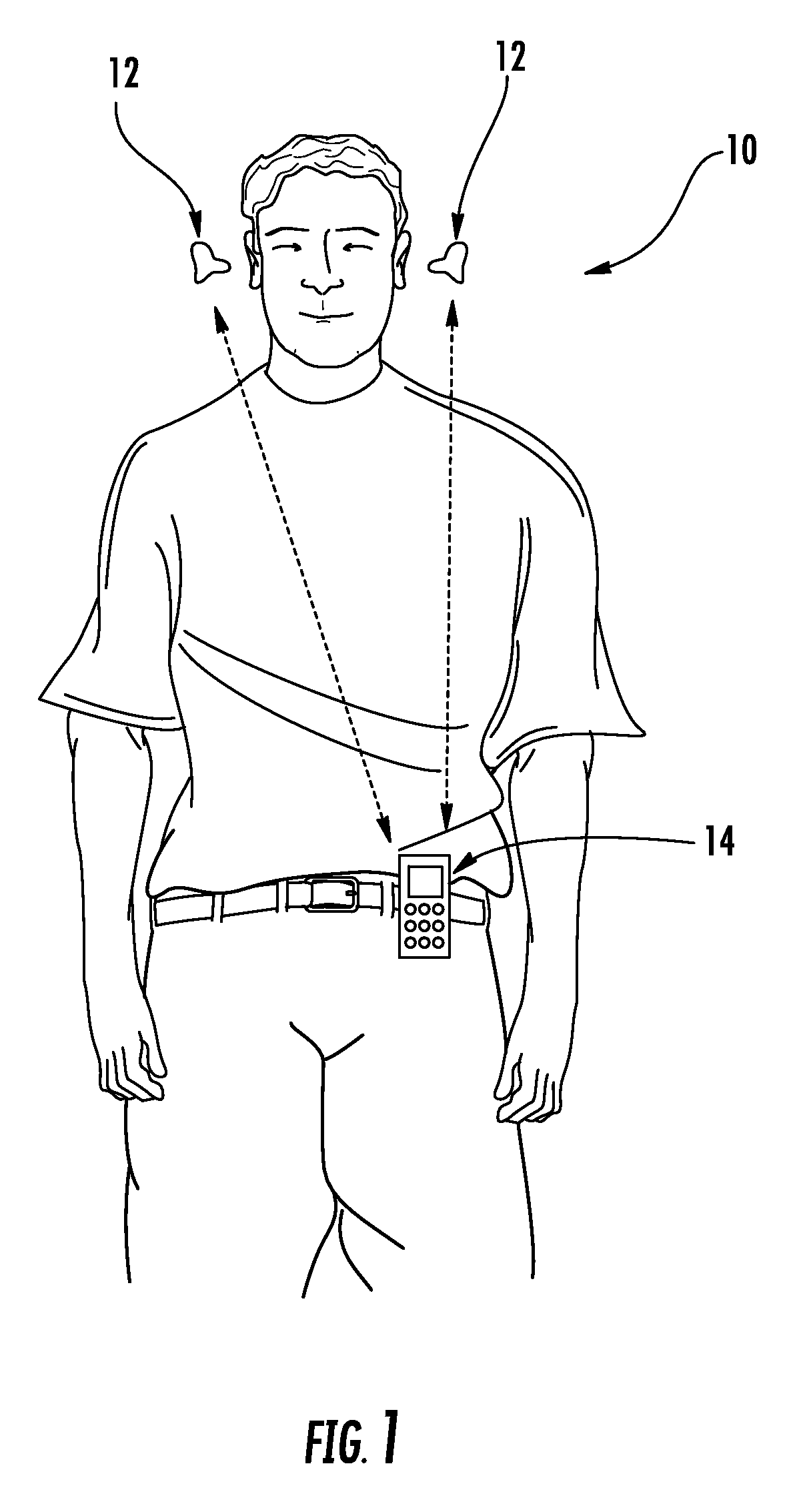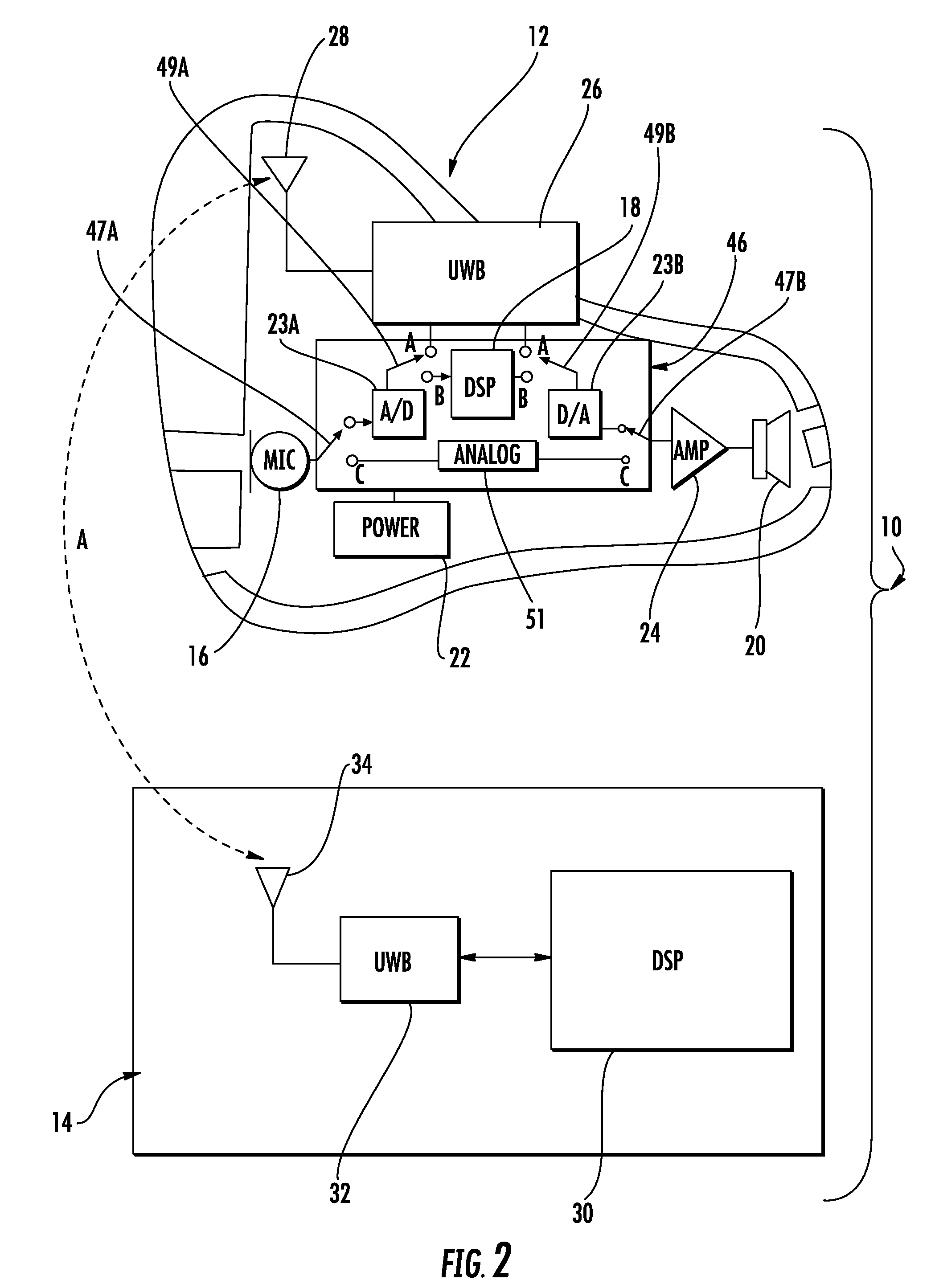Assistive listening system with programmable hearing aid and wireless handheld programmable digital signal processing device
a technology of programmable digital signal processing and listening system, which is applied in the direction of hearing aid set, hearing device active noise cancellation, electronic input selection/mixing, etc., can solve the problems of audio processing power, audio signal processing capabilities from the earpiece, and the calculation which is built into the hardware of the dsp. , to achieve the effect of enhancing the usability and overall functionality of hearing devices
- Summary
- Abstract
- Description
- Claims
- Application Information
AI Technical Summary
Benefits of technology
Problems solved by technology
Method used
Image
Examples
Embodiment Construction
[0042]Referring now to the drawings, the assistive listening system of the present invention is illustrated and generally indicated at 10 in FIGS. 1 and 2. As will hereinafter be more fully described, the instant invention provides an assistive listening system 10 including a functional hearing aid generally indicated at 12 and a wireless, handheld, programmable digital signal processing (DSP) device generally indicated at 14.
[0043]The user depicted in FIG. 1 is shown to be using two hearing aid devices 12. It is common for the hearing impaired to use two hearing aids 12, one in each ear, as many hearing impaired individual have hearing loss in both ears. The use of two hearing aids 12 provides for better recognition of sound directionality, which is important in distinguishing and understanding sound. The depiction of the user in the drawing figures is not intended to limit the invention to a dual hearing aid system, and the following description will proceed from here forward subs...
PUM
 Login to View More
Login to View More Abstract
Description
Claims
Application Information
 Login to View More
Login to View More - R&D
- Intellectual Property
- Life Sciences
- Materials
- Tech Scout
- Unparalleled Data Quality
- Higher Quality Content
- 60% Fewer Hallucinations
Browse by: Latest US Patents, China's latest patents, Technical Efficacy Thesaurus, Application Domain, Technology Topic, Popular Technical Reports.
© 2025 PatSnap. All rights reserved.Legal|Privacy policy|Modern Slavery Act Transparency Statement|Sitemap|About US| Contact US: help@patsnap.com



